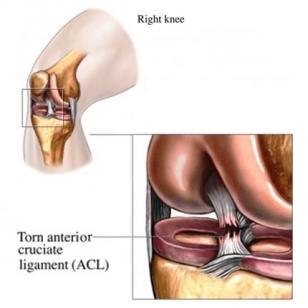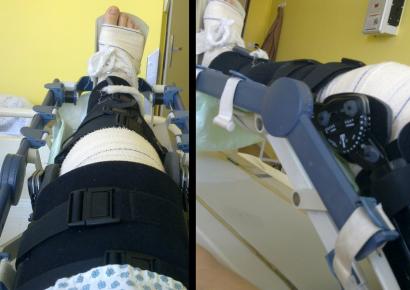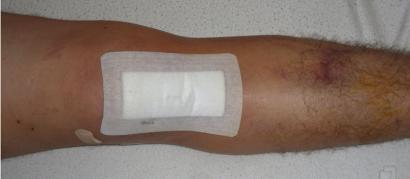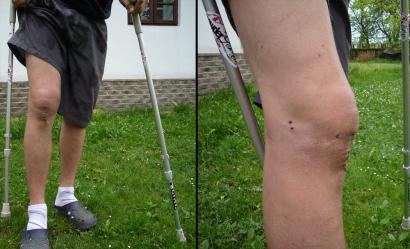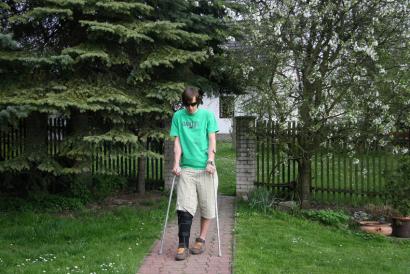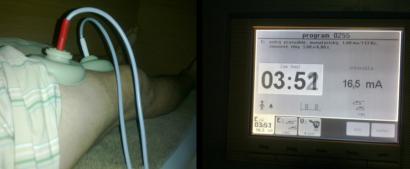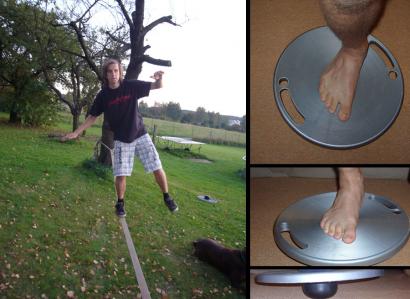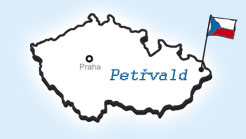
ACL Injury
Injury which does not stops you
During frequent skiing and active approach to this sport, I’ve had heard from my friends about this type of injury and hoped, believed that injuries of this type are not related to me. My knees are healthy and have never had problems with them. Well, no matter how hard you believe in this, there are always forces which can take it all away. In late March of 2011 I ripped my cruciate ligament off and here is my story.
Before I start to describing the cause of this accident, I’d like to mention what are we gonna talk about actually. ACL is one of four main ligaments in the knee where the ACL is very important for stability. People who experience this rupture of the ACL and than subsequently don’t undergo reconstruction of the ligament often complain about the symptoms called "Giving-out". This means when making a step ahead the knee goes away. Almost 80% of these injuries are made in sport activities and not otherwise, it was with me. Surprisingly I ripped my ACL on my right leg which is even though my "stronger "leg. The statistics, however, assured me, that the right leg is usually affected in this type of injury as the first. Speaking about numbers, it would like to also mention that women are far more likely to this injury than man, probably due to a different body structure and weaker ligaments. Well, men still takes the lead. You know, women are more careful, I guess.
The accident occurred on my skis when after the landing followed by in knee bend, squat position I drove into moguls snow which have had been created there previous day by looking for a lost camera. In a squat position on landing, my right leg caught a lump, which directed this lag’s path away from the body. Than I felt a crunch describable feeling like a ski would hit on a rock or something. When I stopped, I felt a pain lasting 30sec with a gradual phasing out. I stood on my skis again and that day I just shifted on skis and rode with a concern that something could have happened what I might know what it is. The knee swelled that day and after arriving at my orthopedic surgeon a knee blood diluted with joint fluid was removed from the knee. Over the week the knee enhanced so I refused an arthroscopy and hoped that everything will return to normal. After two weeks, I felt so well that I decided to kick the balloon. At the time I experienced a very uncomfortable feeling that my bones in the knee shifted unnatural way. Femur and the tibia went externally remained in place. At that moment I felt into the ground with a pain which I would rank among top three in my life and endless paint lasting three minutes. Followed by swelling of the knee again the leg looked like a melon, which required a “puncture” of the blood. This definitely determined diagnosis “ACL tear“.
Each of these options has its drawbacks, because it all depends on individual treatment, injury, surgery and ultimately individuals. I just want to mention that BTB should be stronger than the second option and the overall donor ligament complications can occur when foreign tissue is healing. Please note that there is a risk, but it is a small percentage! Furthermore, the hamstrings does not much disrupt the tissue, because the operation is thru a small hole unlike BTB (own) is when removing craft. The scar has about 6-8 stitches and a slight numbness on the front part of the knee. If having a BTB from the donor there in not removal and therefore no intervention thus it’s faster overall. Another aspect for the selection of these variant is orthopedist himself and his method in which he is confident in.
My option was the BTB graft, own production. I was given a brace and on the first day after the surgery which could open max to 90 degree and allowed me to bend the knee to this angle, which of course I was not able to do that this that day, but if my leg accidentally fell down it would not bend more than 90. The next day I got borrowed a robotic brace, which automatically bend the knee to the pre-set levels without buttoning muscles. I must not forget to mention important information. After the operation is over and even if you can not move with leg at all, keep clenching affected leg’s muscles due to a flaccid. This thigh muscle can flaccid during one or two weeks and give it to its original state by exercising takes months! So in hospital, I spent totally three days and left on my own legs with the help of crutches and braces. After leaving the hospital there was a period of rehabilitation and strengthening exercises which has been continuing until this day.
Rehabilitation began 14 days after surgery, when I had no stitches, so I was able to rehabilitate in the pool. The total rehabilitation, which I attended took about two months and consisted of the following procedures. Magnetic resonance (knee in a magnetic field, which should rapid the healing process), electro diodes (electronic pulses that turn on automatically muscles), swimming (exercise in water, water jets, stretching, bending, etc. I personally recommend), individual rehabilitation with a physiotherapist (learn exercises strengthening, stabilizer muscles throughout the leg, the training on balance boards, balloons etc.), fitness (up to 1 month after surgery, bicycle, lifting weights, a small trampoline for jumps mute, fitness equipment). Especially the last two procedures are those that you can train at home. Rehabilitation in my case took place at home about 80%, riding on the exercise bike, balance board, strengthening. I am not gonna mention all the exercises here just to refer you to Google and YouTube, where they are numerous of them.
In conclusion I must one more thing and to cooling the knee coz during the healing process of got very warm and lubricate (in my case it was Dolgit cream). It is obvious that each case is different and has different way of circumstances and therefore, the facts of my story can not serve as a clear guide for other athletes with ACL tear. Lastly it’s a psychological barrier that may gnaw you by a fear that the leg is no longer the same. I must say that it is up to you what you want to do with your leg in the future, and your strong will to train it and strengthen it.
Text: David Knybel



